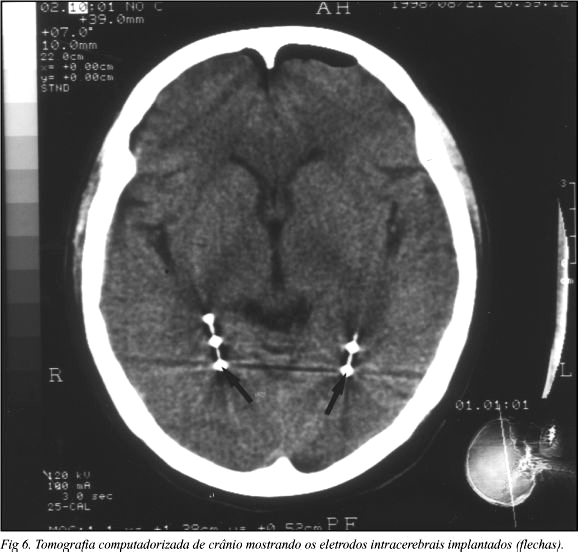We present the case of a 40-year-old woman with refractory epilepsy since aged 18, who was submitted to video-EEG monitoring with intracerebral depth electrodes. The clinical history and examination, magnetic resonance image (MRI), video-EEG and neuropsychological study did not allow the determination of the cerebral onset of epileptic seizures. Depth electrodes inserted by MRI-guided stereotaxis allowed the recording of the epileptic activity and thus showed quite accurately the area of the brain to be surgically resected. She underwent a right anterior temporal lobectomy with amygdalohippocampectomy. The immediate postoperative period was uneventful and she is without epileptic seizures after three months of follow-up. The average pre-operative free-seizure period was two weeks. To our knowledge, this is the first stereotactic surgery for insertion of depth intracerebral electrodes in epilepsy in Brazil.
epilepsy surgery; depth electrodes; stereotaxis; magnetic resonance imaging







